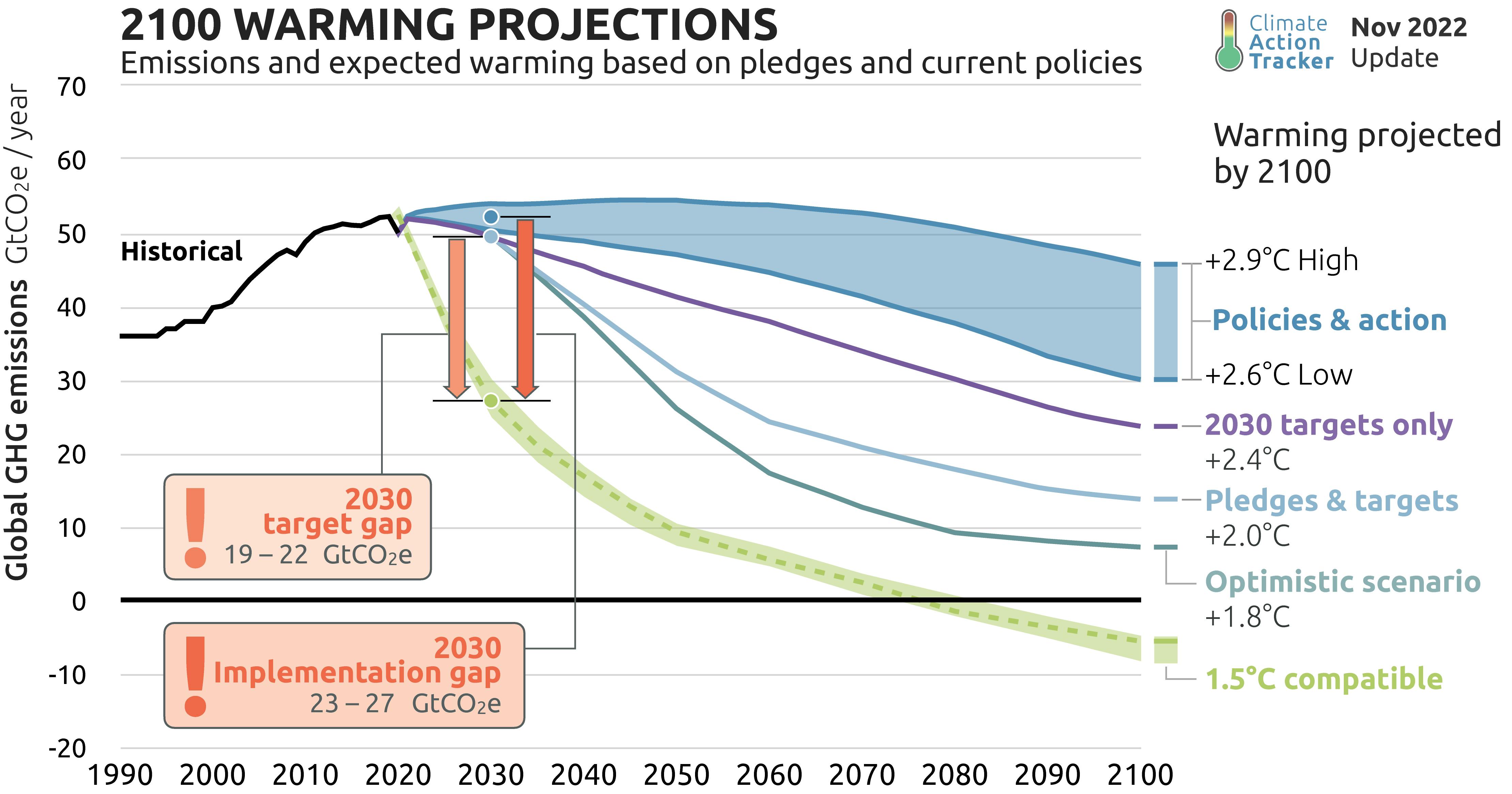TL;DR
- The International Panel on Climate Change's (IPCC) Sixth Assessment Report states that for us to have a 67% probability of meeting the 1.5 °C Paris Agreement target, we have a residual global carbon budget of 400 Gt Co2e, starting from 2020.
- We only have until the end of 2030 until our carbon budget runs out and our chances of reaching the Paris Agreement drastically reduces.
- This means that despite population growth and urbanisation, we will need to reduce emissions by 45% by 2030 and ultimately reach net zero by 2050 in order to stay below the 1.5°C temperature limit and avoid catastrophic climate change.
Conversations around global warming and climate change have ramped up over the past decade, creating a growing concern about what is in store for us in the coming years. Specifically, the years 2030 and 2050 are frequently referenced in these conversations, with international consortiums and governments making them the focus of targets, agendas, and policies. So, why are these years so significant?
The Paris Agreement
The Paris Agreement is an international treaty on climate change whose central agreement is to "limit global warming to well below 2, preferably to 1.5 degrees Celsius (°C), compared to pre-industrial levels". Once we know how global warming works (see below) we can understand the significance of the Paris Agreement and that the accumulation of greenhouse gases, and subsequent global warming and climate change, could have catastrophic consequences. Therefore, meeting the 1.5°C target should be at the forefront of all climate change actions.
Whether we meet the Paris Agreement goal or not comes down to probability and the Global Carbon Budget. The International Panel on Climate Change's (IPCC) Sixth Assessment Report states that for us to have a 67% probability of meeting the 1.5 °C temperature target, we are restricted to a residual global carbon budget of 400 gigatonnes (Gt) of equivalent carbon dioxide emissions (CO2e), starting from 2020. By using the 2019 global emissions rate of 36 Gt CO2e per year, we can see that we have until the end of 2030 until our precious carbon budget runs out and our chances of reaching the Paris Agreement are drastically reduced.
This means that despite population growth and urbanisation, we will need to reduce emissions by 45% by 2030 and ultimately reach net zero by 2050 in order to stay below the 1.5°C temperature limit. If we go beyond our budget, we will have to reduce emissions plus remove the equivalent excess emissions every year to stay below 1.5°C - an extremely tall order given our current climate action struggles.
Achieving 2030 and 2050 targets
This enormous feat requires an equally enormous transformation. Net zero refers to the minimisation of GHGs as much as possible, such that the emissions produced can be balanced by the amount being taken out of the atmosphere to equal (close to) zero emissions. Achieving this will require rapid and far-reaching transitions throughout all aspects of the economy (mainly energy, industry, buildings, transport and land use) as well as changes to our lifestyles and personal carbon footprints. To date, Nationally Determined Contributions (NDCs) (i.e. country-specific climate action plans) and policy-making have been the major actions taken by international governments. However, the Emissions Gap Report 2019 shows that even if all of these NDCs are realised (which seems unlikely at present), we are still on course for an approximate 2.7°C temperature rise… This is an incredibly frightening prospect given the more erratic and extreme weather conditions we are already experiencing at a temperature rise of just 1.1°C higher than pre-industrial levels.

See source: Climate Action Tracker
Ultimately, we have just over 6 years before 2030 and specifically 7 years until our 400 Gt is set to run out, that is clearly not a lot of time to circumvent catastrophic climate change. With so much riding on the year 2030, the ‘tipping point’ for our planet, it is time that we strengthen our commitments and take bold, ambitious steps in reducing our GHG emissions and saving our planet. After all, we only have one! 🌍
How does global warming work?
Normally, the majority of the sun’s solar radiation that passes through the atmosphere is reflected by the Earth’s surface and can then escape back into space. However, heat-trapping pollutants, such as carbon dioxide (CO2), methane (CH4), nitrous oxide (N2O), ozone (O3), and fluorinated gases - known as greenhouse gases (GHGs) - trap the reflected heat and cause the planet to warm (known as the 'Greenhouse Gas Effect'). Natural sources of GHGs and variations in the carbon cycle have caused the Earth’s climate to change several times in the last 800,000 years. However, the Industrial Revolution (specifically the burning of fossil fuels) allowed for drastic lifestyle changes for humans and was consequently the first domino to fall in the climate change reaction we are experiencing. Our emissions have since skyrocketed and with some GHGs staying in the atmosphere for tens to thousands of years after they are emitted, these GHGs are accumulating and will be around long after we are gone.
This continuous accumulation of GHGs from human activities is what is causing global warming. Shifts in the planet’s temperature cause shifts in weather patterns, such as extreme heat waves, more severe storms, increased droughts, rising sea levels etc., and environmental conditions, such as habitat changes, and loss of species. Collectively, these effects are referred to as climate change.
We'd love to hear from you!

